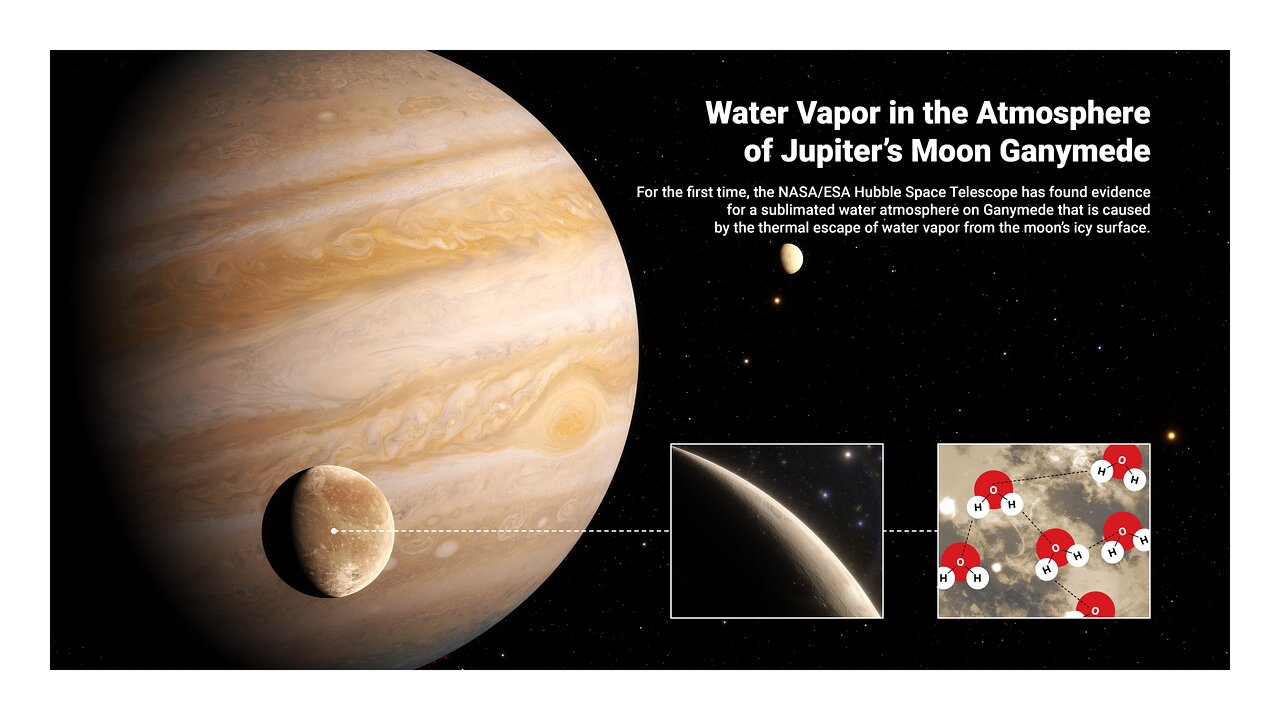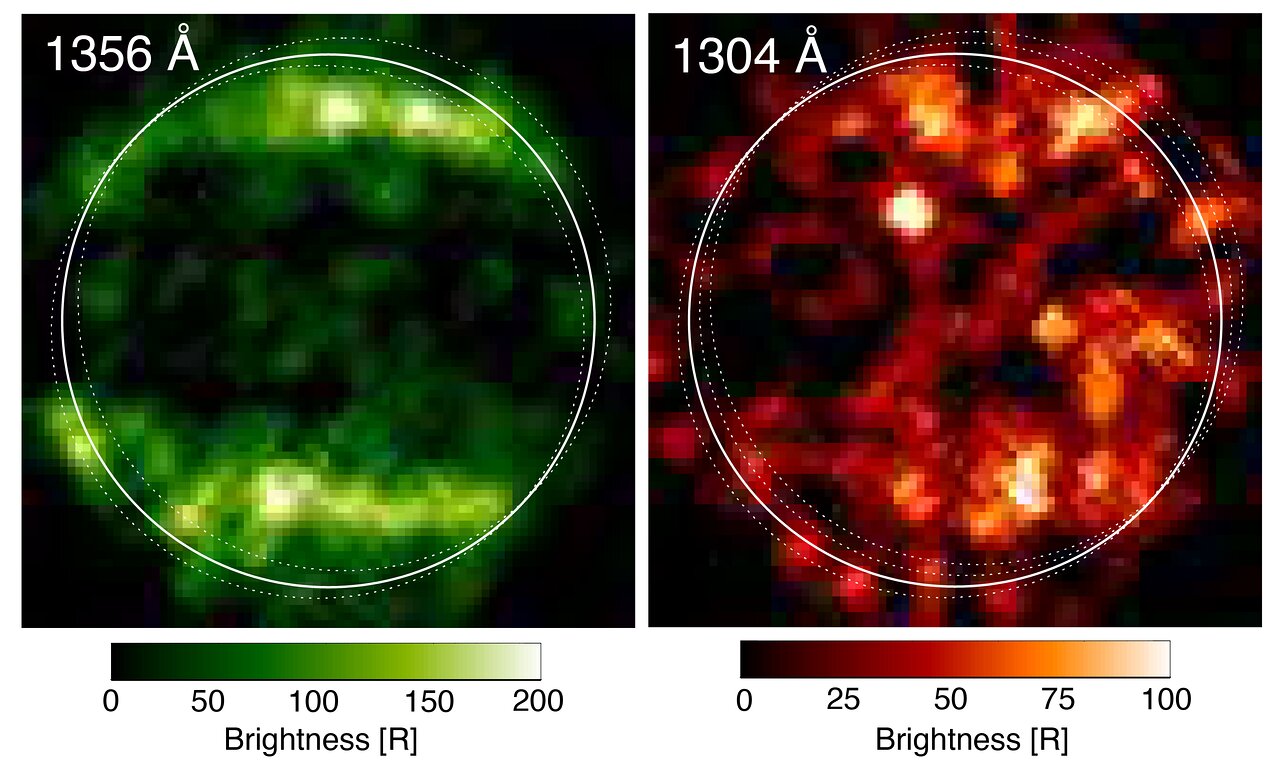Water vapor on Ganymede
Jupiter’s moon Ganymede is the largest moon in the solar system and, at 5262 km in diameter, is even larger than the planet Mercury. But while the planet closest to the sun is dry and hot, Ganymede is the complete opposite. The moon harbors more water than all the Earth’s oceans combined. However, because it orbits so far from the Sun, most of the water is frozen. All of it? No. At a depth of 160 kilometers, there is a liquid ocean beneath the icy crust, warmed by the gravitational pull of the gas giant Jupiter.
But even on the surface, water is not only found frozen, as the Hubble Space Telescope has now been able to prove. Back in 1998, it took the first UV images of Ganymede, which showed a particular pattern in the emissions from the moon’s atmosphere. The moon shows auroral bands that resemble Earth’s auroral ovals. These images were therefore evidence that Ganymede has a permanent magnetic field. The similarities between the two ultraviolet observations were explained by the presence of molecular oxygen, O2. The differences were blamed on the presence of atomic oxygen, O, which produces a signal that affects one UV color more than the other.
In 2018, a team of researchers led by Lorenz Roth of the KTH Royal Institute of Technology in Stockholm measured the amount of atomic oxygen on Ganymede, comparing new and archival images. Surprisingly, and contrary to the original interpretations of the 1998 data, the researchers now discovered that there is hardly any atomic oxygen in Ganymede’s atmosphere. This means that there must be another explanation for the apparent differences between the UV aurora images.
Roth and his team then discovered the explanation in the relative distribution of auroras in the two images. Ganymede’s surface temperature varies greatly throughout the day, and around midday it can become so warm near the equator that the icy surface emits small amounts of water molecules. In fact, the perceived differences between the UV images correlate directly with where water would be expected in the lunar atmosphere.
“Originally, only the O2 had been observed,” Roth explains. “This is produced when charged particles erode the ice surface. The water vapor we’ve now measured comes from ice sublimation, which is caused by the thermal escape of H2O vapor from warm ice regions.”

